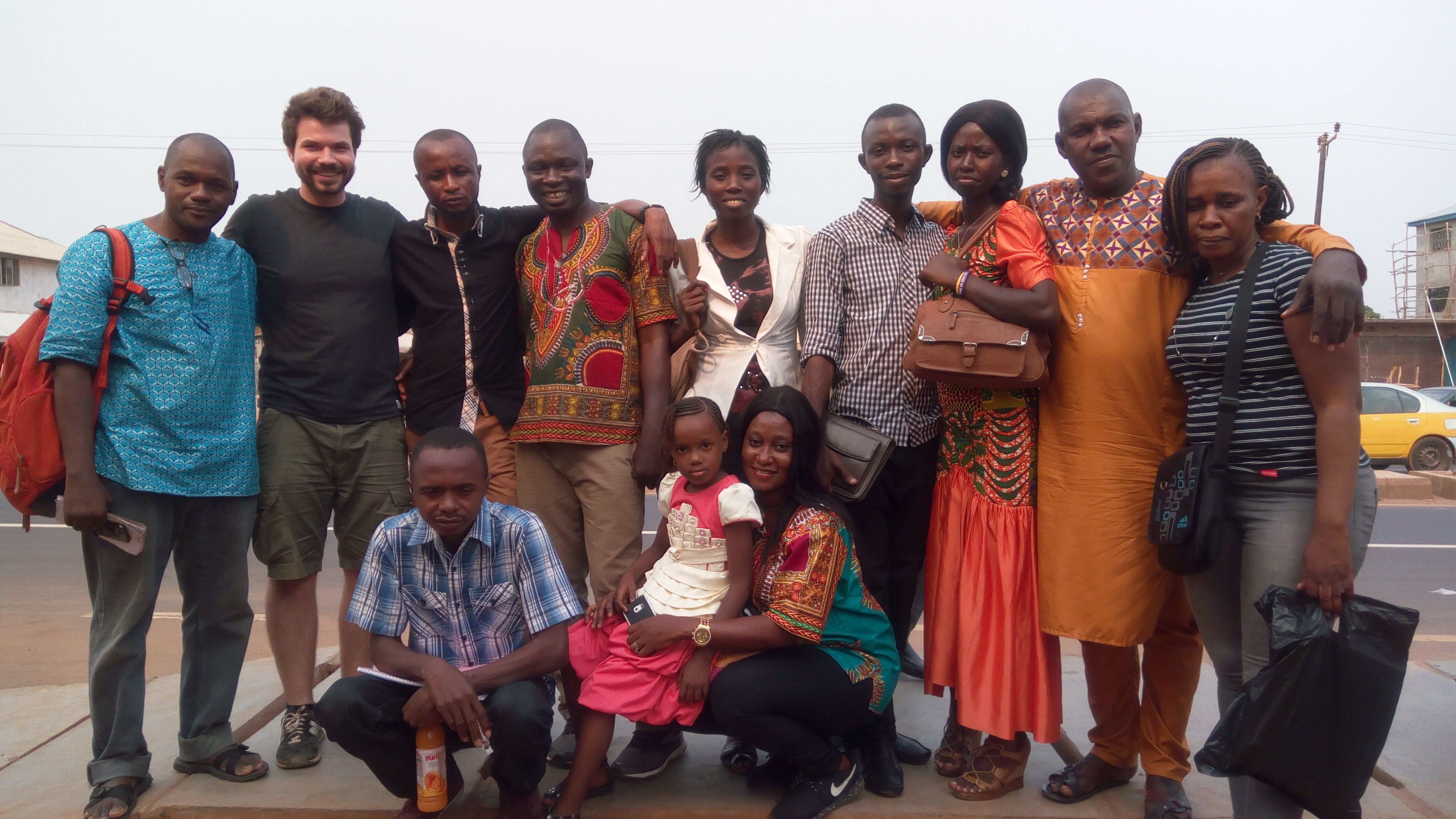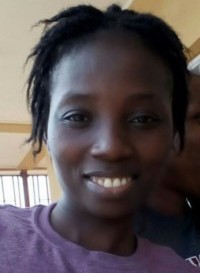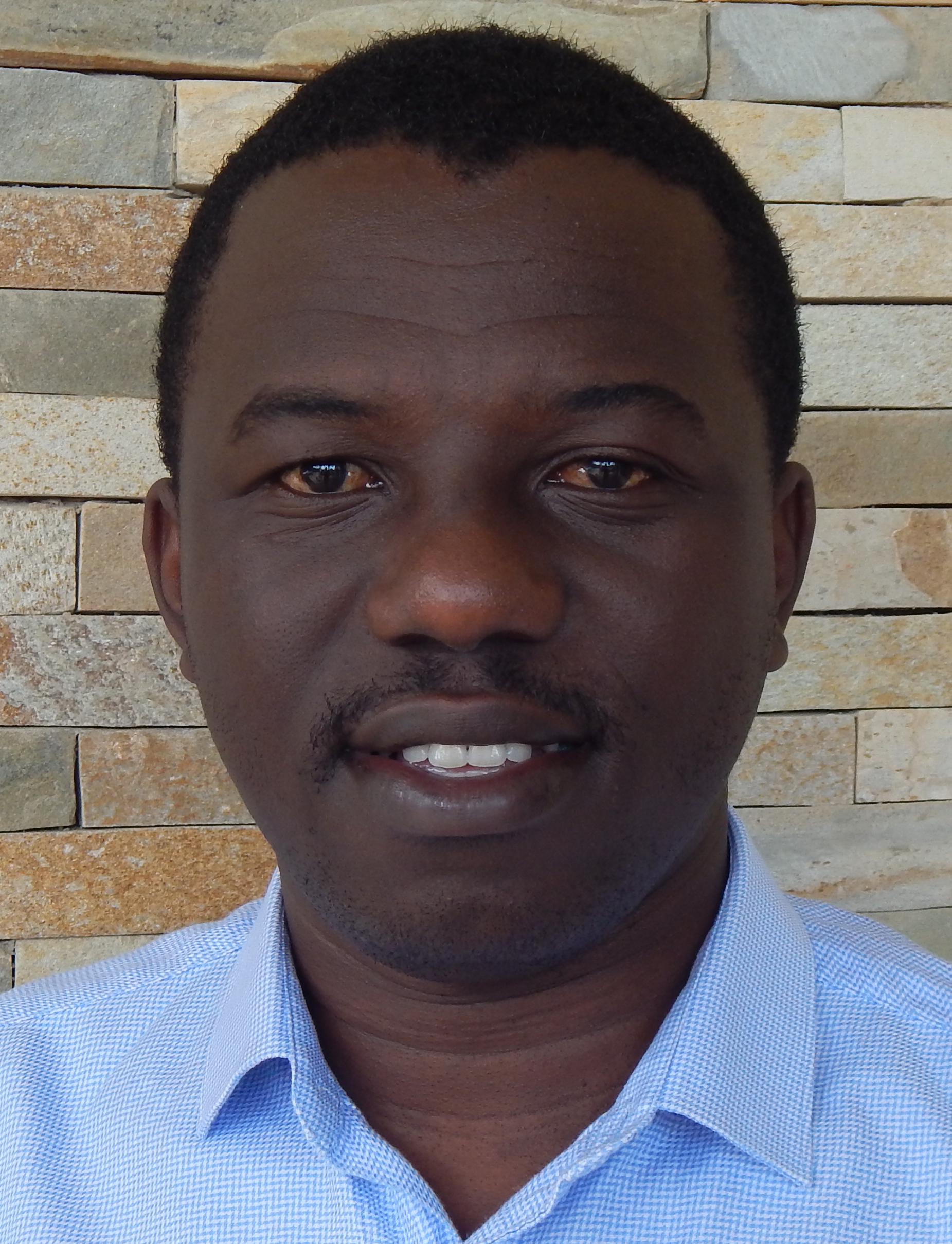The People Behind the Data
This article originally appeared on Pages 24 and 25 of IPA's 2018-2019 Annual Report. Read the full report here.

The IPA-Sierra Leone field team (with Fatu in the center). Credit: Fatu Conteh
IPA’s ability to collect high-quality data rests on the quality of our dedicated staff in the field. Behind every number, every result, is a painstaking (often years-long) process that involves traveling, searching, interviewing, entering, storing (then repeating), and eventually, analyzing and publishing. Who are the people and what are the stories behind the data? Here are a couple from studies featured below.

Fatu Conteh
Research Associate, IPA-Sierra Leone Social Incentives project, with IPA since 2009
As Fatu highlights, IPA field staff sometimes have to improvise to come up with culturally appropriate ways to improve implementation or data collection (study featured on p. 22 of the Annual Report).
What was the most interesting and/or challenging part of working on the bracelets for immunization study?
So, the “social incentives” in this study were colored bracelets that indicated where a child was in their vaccination schedule. But we quickly realized that mothers, even though they were given a card with the official name of the vaccine, wouldn’t necessarily remember the medical name of the vaccine.
In Sierra Leone, we use songs to teach children—in schools, teachers come up with songs to help kids learn and the clinics already had songs with hygiene tips. So we came up with a song based on our implementation guideline set to the local creole language to remind the mothers of what the different colors meant.
Bracelet Song
Yellow for number 1
Green for number 5
But you for cam when the nurse tell you kombra yeri nor
Yellow for number 1
Green for number 5
But you for cam when the nurse tell you Mama yeri nor
Yellow for number 1
Green for number 5
But you for cam when the nurse tell you papa yeri nor
Yellow for number 1
Green for number 5
But you for cam when the nurse tell you neighba yeri nor
Listen to IPA staff and parents learning the bracelets song:
[scald=9931:full]Sometimes we’d be walking through the villages and hear the song being sung!
Similarly we had to adjust on our data collection side. We learned not to ask what vaccinations the child had most recently had, but where on the body the vaccination was—left arm, right arm, leg—and then we would know which one it was.
What made an impression on you during the fieldwork?
One thing that made an impression was how much mothers want to get their children vaccinated and the trouble they go through to do it.
One thing that made an impression was how much mothers want to get their children vaccinated and the trouble they go through to do it. We saw them traveling far and staying overnight in the town where the clinic is to be there in the morning. But to complete a full vaccination sequence requires multiple visits—it could be as many as six visits before the baby is 15 months old, so even though they really wanted to get their children fully vaccinated, many don’t complete them all.
Fatu Conteh has been working with IPA-Sierra Leone for almost ten years, supporting the implementation and management of research projects as well as policy engagement with government ministries and development partners. Before joining IPA, Fatu worked as a registered nurse in hospitals in Sierra Leone and a health officer at a charity that works with street children. She also worked as a field research staff for several years at the Government Statistics Office in Sierra Leone. Fatu graduated as a State Registered Nurse from the National School of Nursing in Freetown and has a BA in Development from the University of Makeni Northern Sierra Leone.
Leodomir Mfura
Senior Research and Policy Associate, IPA-Rwanda, Cash Benchmarking project, with IPA since 2014

When you are in the thick of data collection in a remote mountainous village, you don’t expect your work to make international headlines, as Leodomir recounts (study featured on p. 18 of the Annual Report). But for him, that wasn’t even the best part.
What was the most interesting and/or challenging part of working on the cash benchmarking study?
The most interesting part of working on this study was getting to know the real living conditions at the village level. A big challenge we overcame was finding the participants in hilly and mountainous areas with altitude between 1,500 to 1,800 meters, bad road conditions, inaccessible areas whereby an enumerator could walk three hours one way to get to the study participants.
What made an impression on you during the fieldwork?
One thing that I didn’t expect was how the leaders in the villages were reluctant to [the idea of disbursing] cash. Local leaders told me that the cash could never have an impact when it’s not controlled closely.
Another thing I was surprised by was how almost every mother in the communities we visited—not only those in the sample—wanted their kids to get screened for malnutrition, as we were equipped with anthropometrics materials and anemia testing machines.

Enumerators take anthropometric measurements of a child as part of the Cash Benchmarking evaluation in Rwanda. Credit: Leodomir Mfura
What’s most rewarding about your job?
Being part of a team that is influencing policy worldwide to save the lives of vulnerable populations is truly the most rewarding part of my job.
When you are out in communities collecting data and having sleepless nights, you don’t realize that your work can be recognized at the international level with study articles covered in international media. But that is not the most exciting part. Being part of a team that is influencing policy worldwide to save the lives of vulnerable populations is truly the most rewarding part of my job.
Leodomir Mfura has been working with IPA-Rwanda for five years, providing support on two cash benchmarking evaluations and a community-based health and sanitation study. Prior to joining IPA, Leo managed fieldwork for a water, sanitation, and hygiene research project led by Emory University. He also worked for seven years with different governmental and non-governmental organizations across Rwanda. Leodomir has a diploma in environmental health sciences from the University of Rwanda, a BA in Public Health from Université Ouverte in the Democratic Republic of the Congo, and is currently pursuing an MPH from Mount Kenya University.












